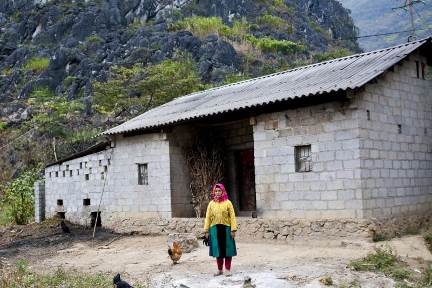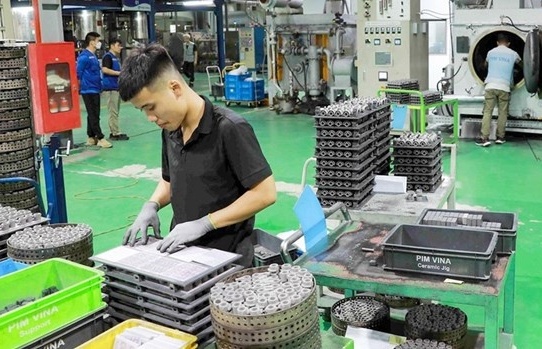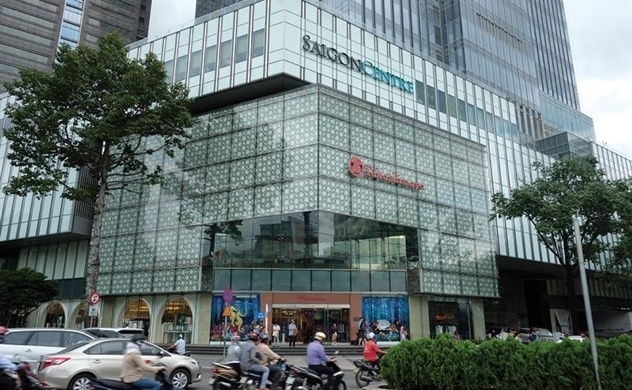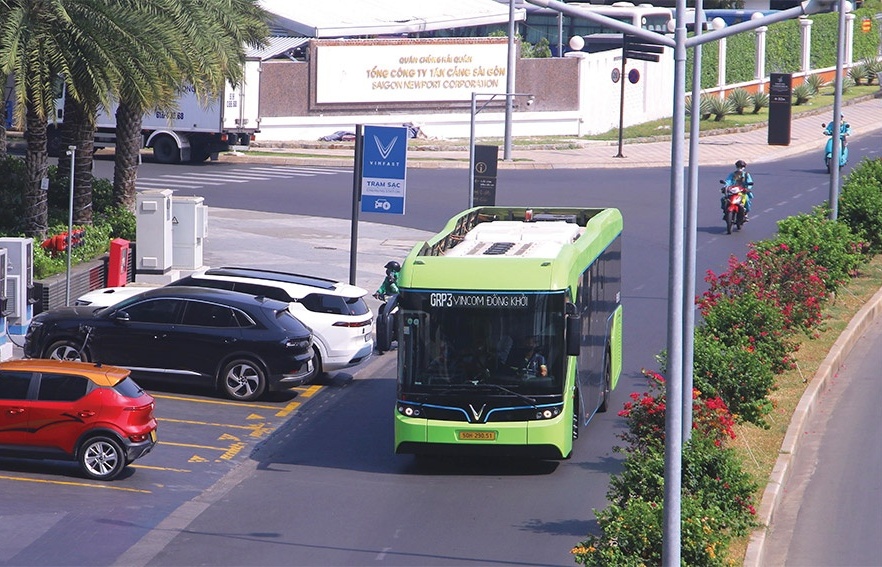EU helps Vietnam phase out asbestos

The World Health Organization (WHO) estimates that currently about 125 million people in the world are exposed to asbestos at their workplace and more than 107,000 people die each year from asbestos-related lung cancer, mesothelioma and asbestosis, resulting from occupational exposure. One in every three deaths from occupational cancer is estimated to be caused by asbestos. (WHO Fact Sheet N°343, July 2014, “Asbestos: elimination of asbestos-related diseases”).
To facilitate Vietnam's efforts, the European Union (EU) is providing support to the governmental agency Vinachemia to find substitutes for this toxic substance.
Vietnamese public opinion has been divided over the issue. Based on published evidence, the Ministry of Health acknowledges the damaging effect of asbestos on human health.
However, Vo Quang Diem, vice-chairman of the Vietnam Roof Sheet Association, while accepting that the scientific evidence regarding the toxicity of asbestos is undeniable, contends that the material can be less harmful to human health if the right mix of production procedures is used, such as “effective technology, compliance with governmental regulations and Convention 162 of the International Labour Organization on asbestos, which calls for providing appropriate work-place safety”.
There is no such debate in the European Union. Craig Boljkovac, international consultant
of the EU-MUTRAP project (supporting Vietnam’s integration into global and regional trade systems, as well as facilitates the country’s sustainable trade and investment in the long-term with not only the EU, but also the rest of the world), said that following a 2005 EU directive, the sale and use of asbestos-based products has been banned.
A subsequent directive has banned all activities in places where workers may be exposed
to asbestos fibre in asbestos mining or manufacturing plants. With few exceptions, the use of asbestos in all forms has been banned in all EU countries
Boljkovac added that the cost of treating people exposed to asbestos was prohibitively high. For example, according to a 2012 report, treatment in the then 27 EU member states cost more than one billion Euro per year.
Vietnam’s asbestos footprint
On a tour of one of the biggest roof-sheeting factories in north Vietnam, Dong Anh Construction and Building material JS Co., vice director of the construction material department Le The Ngoc said that asbestos roofing was an important building material for farmers living in remote areas, as well as those building low-cost homes.
Le Van Nghia, managing director of the company, said that “Asbestos is a convenient choice for poor households: 60 per cent of the company’s roof sheets are used in underprivileged areas in the north-eastern, north-western, and central coast”.

The sheeting is inexpensive, costing only VND25,000-30,000(€1-1.25) per square metre. Other materials, such as ceramic or steel roof tiles, are often four to five times the price. The company has a 30-35 per cent coverage of the local market. About 20 million square metres of roof sheets are made in Dong Anh district alone each year.
Phase out
In late 2014 the EU through MUTRAP provided support to the governmental agency Vinachemia and the Ministry of Industry and Trade's (MoIT) Chemical Administration to develop a national action plan to phase out the use of asbestos as a building material.
Crucially, this took the form of a study and report on Chrysotile Asbestos, titled Support to Vietnamese industry to upgrade its production methods to adjust to the EU’s technical regulations and standards in the area of chemical safety, and a manual for chemical products in Vietnam, and the organisation of workshops to disseminate the report and produce a policy paper with a series of recommendations.
The expectation is that Vietnam will add asbestos to Schedule III of the Rotterdam Convention, a multilateral treaty to promote shared responsibilities in relation to the importation of hazardous chemicals, meaning that its production and usage will be restricted and then phased out altogether.
Luu Hoang Ngoc, vice-director general of the Chemical Administration, stated that all asbestos products had to be reported to the authority upon importation. He praised EU-MUTRAP's assistance in mapping out a detailed pathway to terminate the use of asbestos in all forms by 2020.
Efforts to prevent the harmful effects of asbestos have been underway for some time in Vietnam. Under the prime ministerial Decision 1469/QD-TTg, approving the building material master plan for Vietnam by 2020 and vision to 2030, no asbestos factories will be allowed to expand beyond 2020. A suitable asbestos substitute will have to be found by then so that the material can be abolished by 2030.
Finding a substitute
Research into non-asbestos roof sheeting started in Vietnam as early as 2001. In 2003, the Technology Institute and the MoIT initiated a national level study titled Research, design and development of non-asbestos roof sheet production lines for an output of 0.5 million square metres a year (Project KC.06.15), with preliminary success in trial production of PVA (Polyvinyl Acetate sheets).
Nghia noted that 12 years ago his company carried out research on sheeting made from jute fibre and composite fibre, but found little success. “To find a better technology, research and development will require hundreds of billions of dollars investment. That will be a challenge to roof sheet makers,” he said.
As part of EU-MUTRAP recommendations, Boljkovac said that three pilot operations would be rolled out, including the selection of the correct site for production of asbestos substitutes financed by donors. The EU and Japan are suggested to take the lead in providing support for these pilot projects. Subsidies may also be needed if a cost-effective plan is unavailable, he added.
Until Vietnam finds a proper substitute material, the Ministry of Construction will keep working with the authorities to monitor and inspect asbestos-related operations, and crack down on any work misconduct affecting safety and the environment.
|
The Ministry of Industry and Trade has asked the prime minister to accept the inclusion of asbestos in Schedule 3 of the Rotterdam Convention in the seventh session (May 2015) – meaning that its production and usage will be restricted and then phased out altogether. The ministry's position is that, in tandem with having a roadmap for phasing out the usage of asbestos, relevant ministries need to introduce appropriate policies supporting workers and producers in the roof-sheeting sector, and changes to substitute materials. |
At a Ministry of Health Symposium on protecting the community from the harm of chrysotile asbestos in late 2014, a “Community saying no to asbestos” plan was developed for pilot implementation in three communes in 2015. The initial focus will be on correctly and sufficiently updating the community on the existence of asbestos in existing commercially available products. Later, support will go to commune governments and users through soft loans allowing the replacement of asbestos-based roof sheets with safer alternatives. |
What the stars mean:
★ Poor ★ ★ Promising ★★★ Good ★★★★ Very good ★★★★★ Exceptional
Latest News
More News
- Industrial parks within Vietnam keen on Taiwanese investment (April 17, 2024 | 23:00)
- Vietnam can emulate Taiwanese high-tech success (April 17, 2024 | 21:00)
- Capital influx from Taiwan builds up steam in Vietnam (April 17, 2024 | 19:00)
- Chip industry taking on new players (April 17, 2024 | 16:38)
- Support rises in semiconductor chip development in Vietnam (April 17, 2024 | 16:00)
- Beacon Investment Fund to expand Lotus Group's F&B operations (April 17, 2024 | 11:09)
- Public investment progress requires a stronger thrust (April 17, 2024 | 09:21)
- Disbursement delay deemed unacceptable (April 17, 2024 | 09:13)
- Lack of sand prompts alternatives for traffic projects (April 17, 2024 | 08:00)
- Vietnam asks Apple to make it global production base (April 16, 2024 | 16:11)















 Mobile Version
Mobile Version